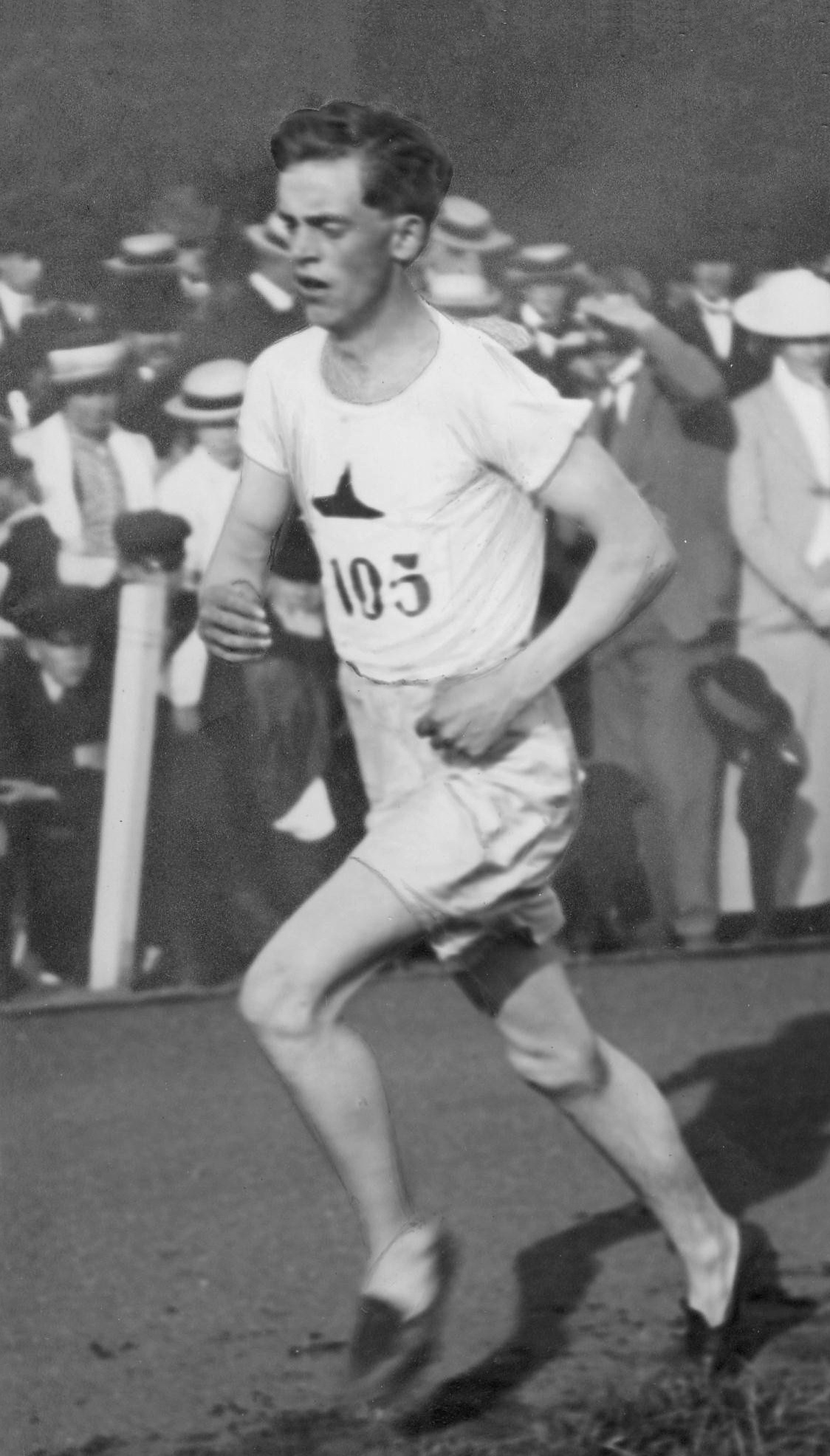1. Overview

Eric Natanael Backman (Eric Natanael BackmanEric Natanael BackmanSwedish; born May 18, 1896 - died June 29, 1965) was a Swedish long-distance runner who achieved his most significant successes at the 1920 Summer Olympics in Antwerp, where he secured four medals: one silver and three bronze. He was a dominant figure in Swedish athletics, holding multiple national championships and records in various distances. After his competitive career, Backman transitioned to working in industry.
2. Early Life and Background
Eric Backman was born on May 18, 1896, in Acklinga, Sweden. He stood at 5.6 ft (1.72 m) tall and weighed 141 lb (64 kg) during his athletic career. His athletic club was IFK Tidaholm.
3. Athletic Career
Eric Backman's athletic career was marked by consistent performance both nationally and internationally, culminating in his impressive medal haul at the 1920 Summer Olympics.
3.1. Early Achievements and National Records
Backman demonstrated his talent in long-distance running early in his career. In 1919, he won the 4 miles title at the British AAA Championships. He was an eight-time Swedish national champion, winning titles in the 5,000 metres and 10,000 metres races between 1918 and 1923. During this period, he also held several Swedish national records, including those for the 5,000 metres, 10,000 metres, 5 miles, and the one-hour run. His personal best times were 14:51.0 for the 5,000 metres, set in 1919, and 31:02.2 for the 10,000 metres, set in 1921.
3.2. 1920 Antwerp Olympics
The 1920 Summer Olympics in Antwerp represented the pinnacle of Backman's career, where he secured four medals in various long-distance events. In the 8,000 metres individual cross-country race, Backman won the silver medal, finishing just 2.6 seconds behind the legendary Finnish runner Paavo Nurmi. His strong individual performance also contributed to the Swedish cross-country team winning a bronze medal in the team event, as two other Swedish team members finished 10th and 11th.
Backman's contributions continued in the 3,000 metres team race. Although he finished second individually in that race, he did not receive an individual medal for it. However, his performance, alongside his Swedish teammates who finished 10th and 12th, was instrumental in securing a bronze medal for the Swedish team. He earned another bronze medal in the individual 5,000 metres race, once again finishing behind Paavo Nurmi. These achievements solidified his status as a formidable competitor on the international stage.
3.3. Post-Olympic Competitive Activities
After his success at the 1920 Olympics, Eric Backman continued his competitive activities. In 1921, he competed again at the British AAA Championships, where he placed second in the 4 miles event, finishing behind Walter Monk.
4. Personal Life and Later Career
Known for his athleticism, Eric Backman was also noted for his lifestyle habits, including being a heavy smoker and enjoying alcohol. Despite these habits, he maintained a high level of performance throughout his athletic career. After retiring from competitive athletics, Backman embarked on a second career. From 1943 onwards, he worked at the Volvo factory located in Skövde, Sweden.
5. Death
Eric Backman died on June 29, 1965, at the age of 69, in Skövde, Sweden.
6. Legacy and Assessment
Eric Backman is remembered as one of Sweden's most accomplished long-distance runners of his time. His remarkable achievement of winning four medals at the 1920 Antwerp Olympics, including a silver in a direct contest with the iconic Paavo Nurmi, underscores his competitive prowess. His numerous Swedish national championships and national records further highlight his sustained dominance within Swedish athletics during the late 1910s and early 1920s. His career demonstrated significant dedication and skill, leaving a lasting mark on the history of Swedish sport.